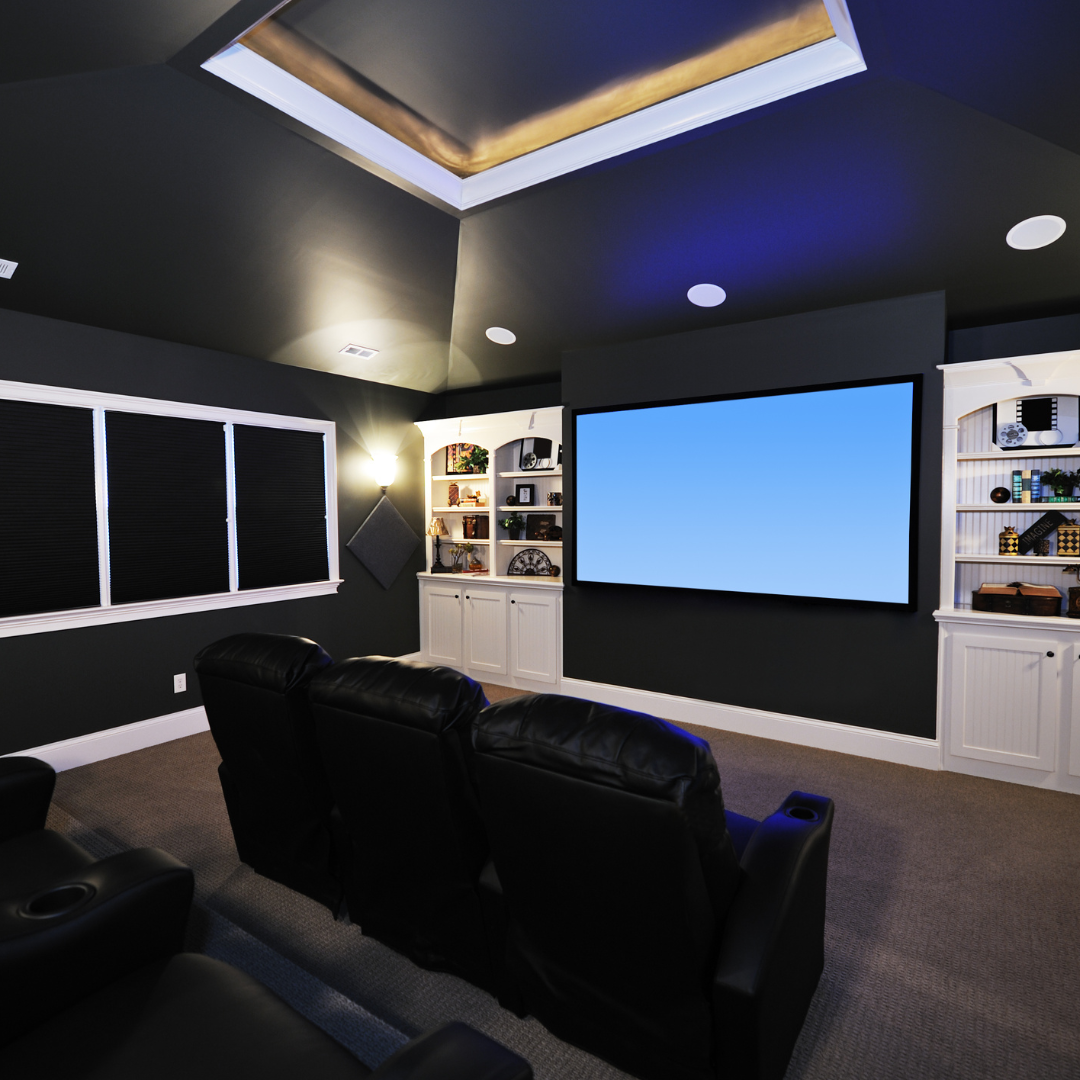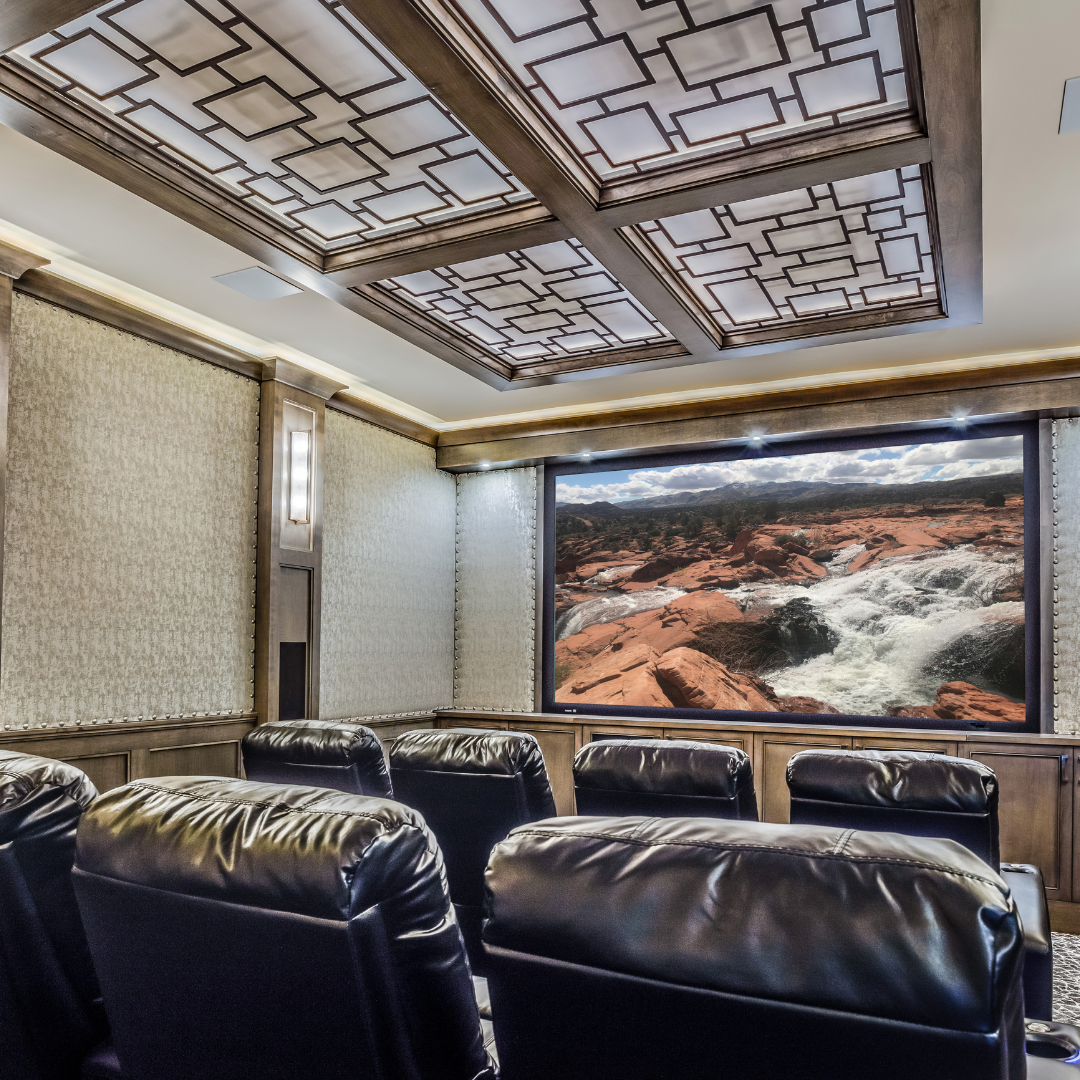Given the wealth of options when it comes to video-based entertainment, many people are growing fond of the idea of putting a movie room or a home cinema room in their homes.
The convenience of such a space carries some cost implications since there are a few things needed to have the ideal movie room set up in your home.
Here are some of the cost breakdowns you are likely to consider when setting up a movie room in your house.
How much does it cost to have a high-level home theater in your home?

Experts indicate that you should expect to spend around $10,000 on a movie room setup for your house. While there are award-winning custom theaters that cost nearly $50,000, you don’t need to spend an exorbitant amount to have a good movie room in your home.
The national average cost for installing a home movie room in North America ranges between $10,000 and $70,000.
What will you need to acquire for a home movie room?
A viewing device
Every movie room requires either a TV set or a front-facing projector and screen combination that is ideally bigger than 50 inches. Experts recommend a projector because it more accurately emulates a cinema experience.
These cost between $500 and $1,000.
A media device

This refers to anything from which your video content can be sourced and directed to your viewing device. This can be anything from a Blu-Ray or DVD player, a VCR, a streaming device like a Chromecast, Apple TV, Amazon Fire Stick, or a games console.
A good media streaming device should cost between $200 and $500.
Surround sound speakers

Source -
While normal audio outputs in stereo through two speakers, a movie room requires a more immersive audio experience. A surround sound system usually starts with around 5 speakers and a subwoofer.
Your budget will determine what device you end up getting since a surround sound system can go up to 9 speakers which offers a premium listening experience with satellite speakers spread around the movie room. Surround sound speakers cost around $700.
AV receiver
This refers to the central hub of a home theater system where media-playing devices, viewing devices, and speakers are plugged in for a synchronized connection.
Such a system allows viewers to easily switch between video and audio sources and provides some master control over sound and video settings such as color tuning and sound equalization.
A quality AV receiver costs about $4,000
Cable solutions

All of your different devices have to be connected, which means having a range of cables. These include HDMI cables, RCA cables, VGA cables, and digital audio cables.
Ensure your budget for quality cables so that you only have to purchase them once even when you decide to upgrade your viewing devices, media devices, and sound systems.
Remember that speakers sound best when wired together, which means having some cables strung around the room. Thus, you may want to consider some cable management solutions such as zip ties, cable clips, and Velcro sleeves that can help you blend lengthy cables into your walls, furniture, and other surfaces in your movie room.
Experts recommend doing some thorough research on the best type of wiring for the video and sound systems, and the right kind of cable management. Remember that the good stuff does not come cheap, so you may want to set aside a significant amount to get the right equipment that will serve you for long periods.
The cost of cable solutions is around $7 per square foot.
Soundproofing
Soundproofing life foam and wallboards not only block out ambient sound, but also allows you to crank up the sound in your movie room without bothering others in your home or any nearby neighbors.
Soundproofing costs between $5 and $12 depending on the quality and where you acquire them from.
Acoustic conditioning
This refers to managing the characteristics of sound in your movie room such as reverberation, echoes,and sound crossover. Acoustic conditioning results in a more enjoyable viewing and listening experience since the sound ends up being much clearer.
This conditioning depends on
- the type of cushions on your seating,
- the nature of the soundproofing,
- the type of curtains, and
- the surface area of hard elements in your movie room.
You can get amazing options for soft cushions and upholstery foam from $35 retailing on different online stores.
Light management

Unless you have a dedicated home theater space that is enclosed from external elements, you are likely to have at least one conventional window in your movie room. Experts recommend investing in blinds and blackout curtains.
Blackout curtains cost between $20 and $40, while blinds are available from around $60 per square foot.
You may also want to consider some elegant lighting on a dimmer switch so that you can set the lighting in your movie room to be as bright or as dark as you like it. Dimmer switches cost between $10 and 35$ on average, and you can get higher-end models that are more expensive.
Remember that the right lighting can make all the difference to viewing experiences, considering factors like glare and light bleed which detract focus from the visual content.
Comfortable seating
While a couch is probably fine for casually watching TV, a true cinema experience warrants upgrading to customized seating solutions. Consider comfortable seating like recliners, beanbags, and second-hand tiered cinema seating for larger movie room spaces.
What if I want to spend the least possible amount on a home movie room?

While the upper end of a movie room budget can be infinite, experts indicate that you can spend as little as $500 for a beginner’s setup. This is the cost of a good TV or a mid-tier video projector and little else.
Such a setup is a good idea for casual movie watchers who do not need soundproofing, luxurious lighting, and other additions to be able to enjoy their viewing experience.
Conclusion
Remember that a home cinema room requires some input such as a screening device like a TV or a projector, some lighting, a sound system, and some insulation from external elements like ambient sound and ambient light.
While these additions may be costly, it is a worthwhile experience to enjoy immersive videos, movies and TV shows in the comfort of a dedicated and purpose built-space.
You may want to consider consulting home entertainment experts so that you know the common pitfalls to avoid and how best to deploy the budget and resources allocated to your movie room setup.







Leave a comment
This site is protected by hCaptcha and the hCaptcha Privacy Policy and Terms of Service apply.